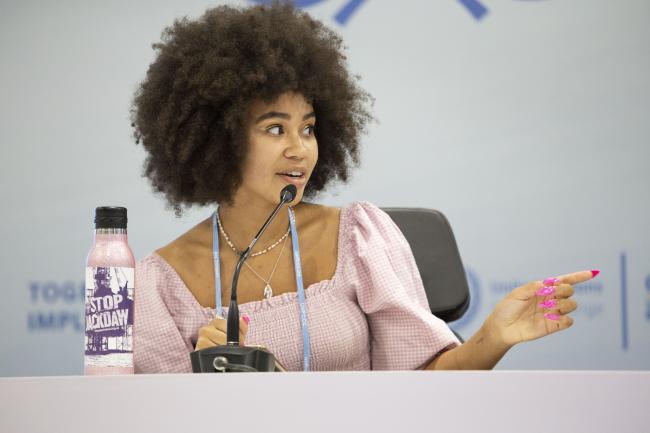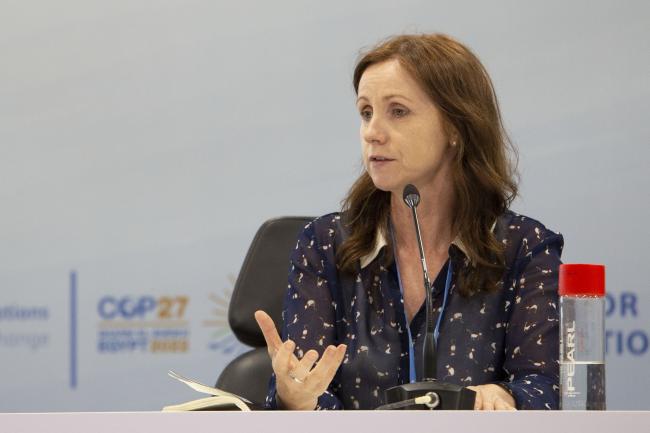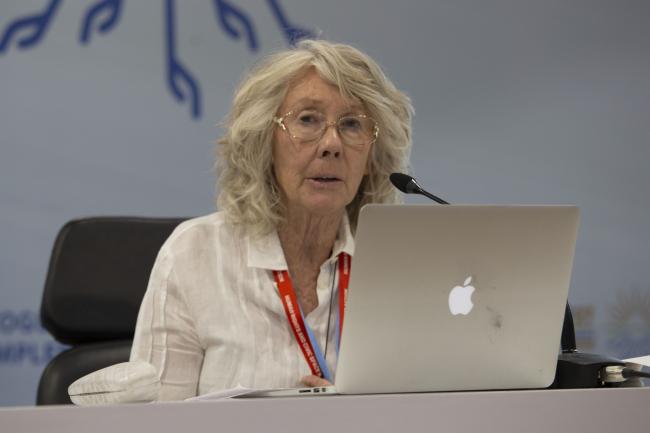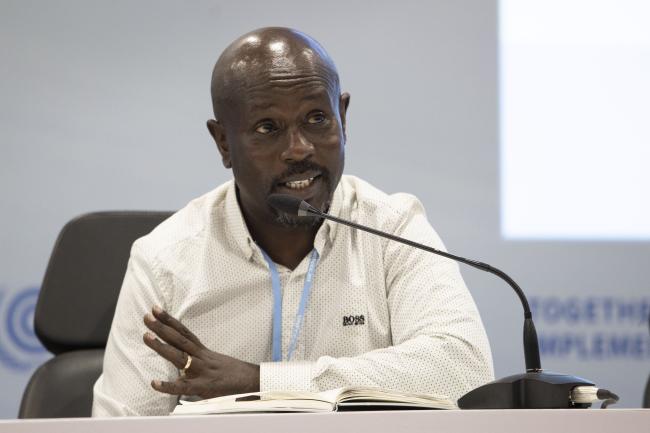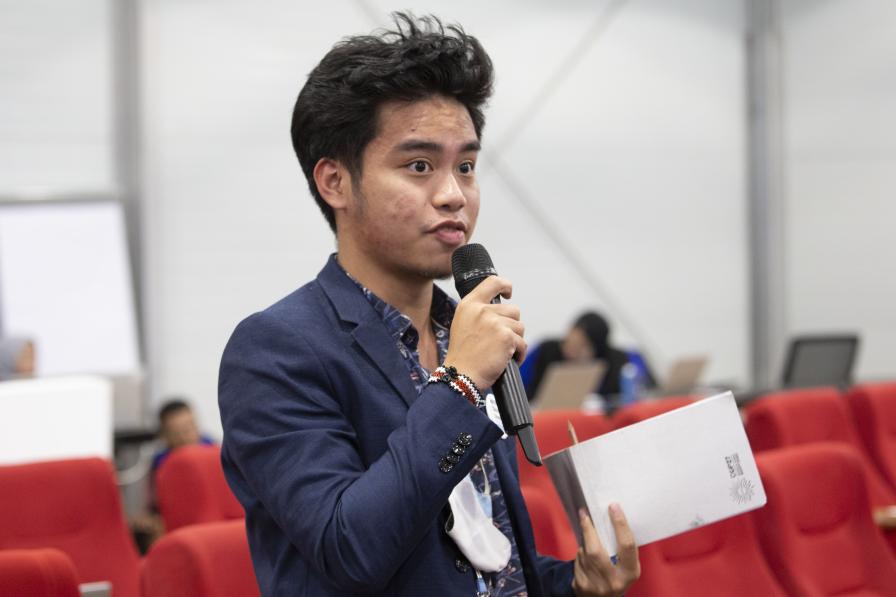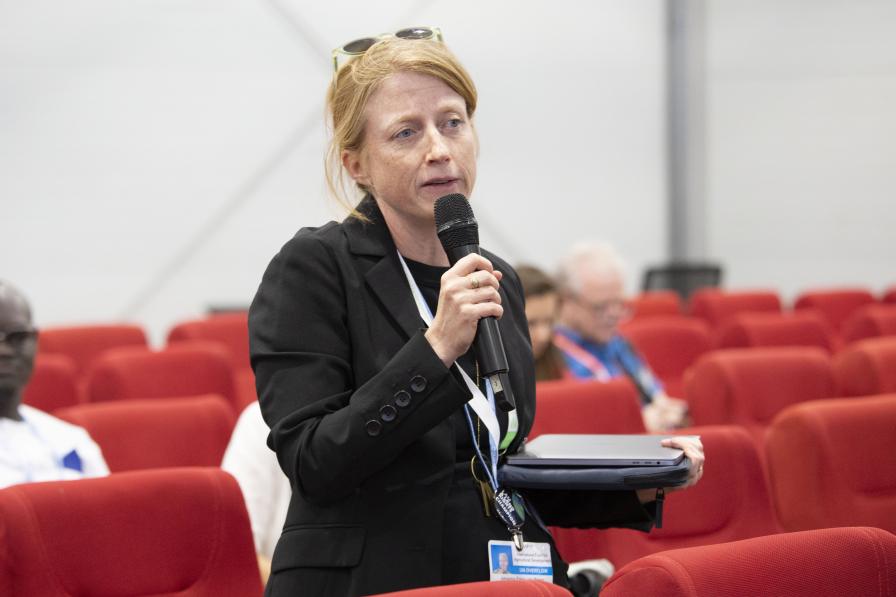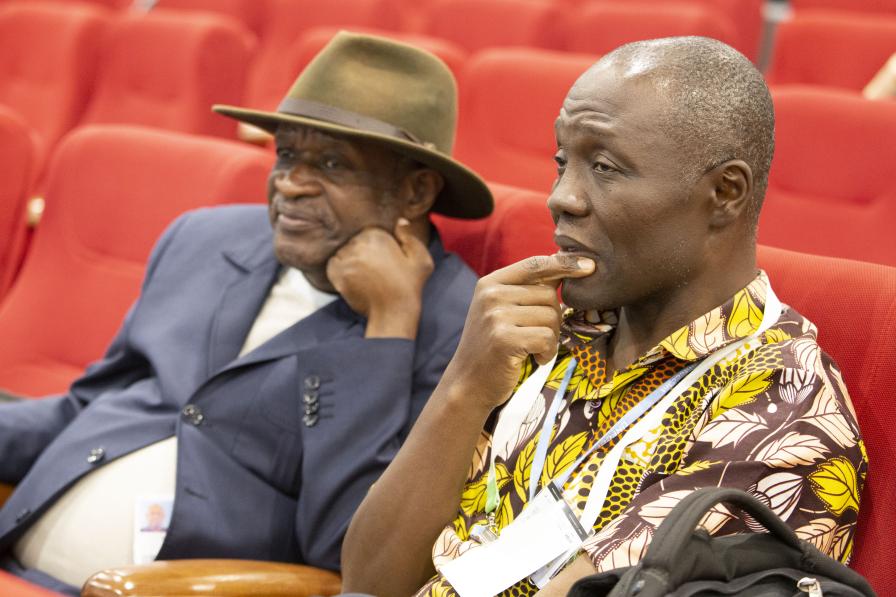Summary
Great hope has been placed in achieving significant carbon reduction through natural carbon sinks, but this approach requires land. A new report, presented at a side event, looks into the gaps between the official climate plans of governments and the lack of land to meet pledges and commitments.
The Land Gap Report is a study that presents the gaps between official climate plans of governments and the lack of land to meet pledges and commitments.
The event was moderated by Mikaela Loach, author and climate activist, who expressed that “not all climate work is climate justice work but all climate justice work is climate work.” She invited the speakers to share the report’s key findings and discuss challenges and opportunities.
Kate Dooley, University of Melbourne, presented key findings of the Land Gap Report, showing that pledges in Nationally Determined Contributions (NDCs) reflect an unrealistic reliance on land-based carbon removal, as there is a huge gap between the amount of land in NDC pledges and the amount of land available for this purpose. She pointed out that “land-use change already exceeds planetary boundaries,” and that the pledges would require land-use change that may pose a risk to human rights. Dooley cautioned that the government’s overreliance on carbon removal could push ecosystems, land rights, and food security to the brink. Thus, “climate pledges should focus on protecting and restoring ecosystems with carbon benefits.”
Wim Carton, Lund University, observed the growing concern about the integrity of corporate pledges as these net zero pledges have “loopholes.” He pointed out that, although various methods allow for the balance of continued sources of emissions and removals of carbon dioxide (CO2) in the atmosphere, the net accounting for these methods obscures what the real balance is. He also discussed the risks associated with large-scale removal of carbon, which include the potential: inability of land-based removals to compensate for continued use of fossil fuels; negative social and environmental side effects; and failure of carbon dioxide removal (CDR) technologies to perform as intended.
Anne Larson, CIFOR-ICRAF, stated that “what we need is a paradigm shift to solve the global climate crisis.” She emphasized that solutions must be “just” because “patchwork solutions” may have detrimental impacts. To be good stewards of the land, she opined that land pledges must consider the “competing needs” of people living on the land. She also discussed that simplistic land and forest-based solutions are “unrealistic and perpetuate discrimination against Indigenous Peoples’ communities.” In fact, expert-led conservation and management initiatives that “insist on top-down solutions” often fail because their results are in opposition to Indigenous Peoples’ rights, she noted. Stewardship of land should instead be based on participation and “co-designed to be flexible and adaptive,” she suggested, because “we have to move forward in the right way with clear goals.”
Virginia Young, Australian Rainforest Conservation Society and Griffith University, presented research showing that older, primary forests are far more capable of sequestration than younger, secondary forests. She emphasized the critical importance of maintaining the integrity and stability of these ecosystems, and climate agreements do not sufficiently recognize the value of carbon retention, with accounting rules that suit “industrial logging and fossil fuel interests.”
Stanly Riamit Kimaren, Indigenous Livelihood Enhancement Partners (ILEPA), cited the Land Gap Report as evidence that the current system of land use and Nationally Determined Contributions (NDCs) is “built on quicksand.” As adequate land does not exist to achieve countries’ NDCs, the present system “implies displacement” of Indigenous Peoples from their land. Kimaren emphasized the importance of securing land management rights for Indigenous Peoples, while addressing the need to transform food systems, as well as “the elephant in the room, that is our reliance on fossil fuels.”
Answering audience questions, Kimaren noted that recognition of Indigenous Peoples does not go far enough, and offered the example of Kenya where implementing constitutional recognition of Indigenous land rights is hindered by a lack of resources.
Asked for specific recommendations: Young pointed out that protection of ecosystems is key and encouraged a holistic approach to recovery across a myriad of ecosystems; Dooley urged more transparency in NDCs and not allowing for a confidentiality clause in the Article 6.2 mechanism; and Wim cited the need for Intergovernmental Panel on Climate Change processes to take a broader view of alternative futures with a variety of methodologies beyond modeling future scenarios.
Answering Loach’s final question about what activists should do, Young responded: “Look out for what we’ve got first,” adding that it is “absurd” to try to “save the planet with imaginary trees.”
Organizer: Griffith University, in collaboration with Lund University
Contact: Stephen Leonard | steve@rationaleadvisors.com
For more information: https://www.landgap.org/
To receive free coverage of global environmental events delivered to your inbox, subscribe to the ENB Update newsletter.
All ENB photos are free to use with attribution. For photos from this side event, please use: Photo by IISD/ENB | Angeles Estrada.

